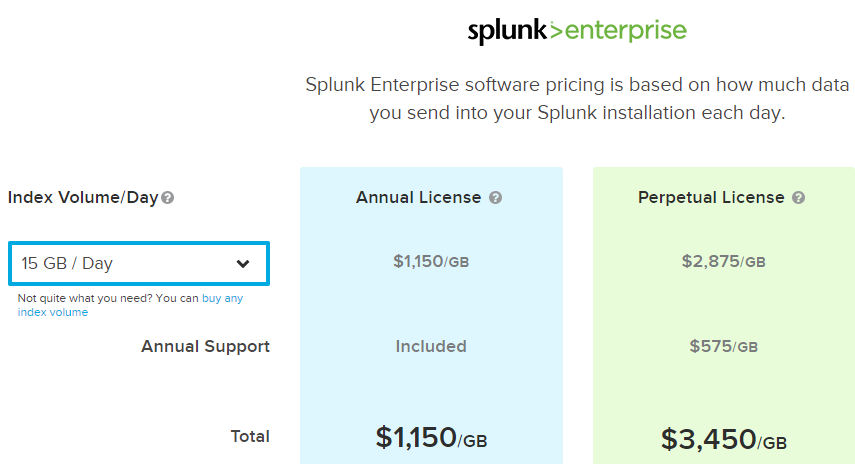
If you were running an e-commerce platform you would probably find spikes of data ingestion from promotions or advertisements. For example, if you were to analyze the amount of data collected from a corporate network device over time you would probably find that the device generates 100 times more data during business hours than on weekends. The amount of data generated by IT systems can fluctuate rapidly from moment to moment, which could effect your Splunk pricing. What data sources will you have to collect to analyze and solve these problems and how much data will that be? This is a particularly difficult question to answer – it requires a technical understanding of the systems involved and the nature of the data these systems emit.

Consider which of these use cases matter most to you and prioritize their order of importance. Think about the problems you want to solve with Splunk – application monitoring, security, sales analytics, or anything else.
#Splunk pricing license
The most important component in deciding what Splunk license is right for you is estimating your data needs over time. Estimate your data ingestion for accurate Splunk pricing We all know by now that Splunk Enterprise is licensed by the amount of data you ingest per day and is sold as a perpetual or term (annual) license – but what license makes the most sense in your environment? In this article, we will investigate what details drive your Splunk pricing, license needs and arm you with the tools you need to make the right purchase. Choosing the right license for your Splunk environment can be a complicated task.


 0 kommentar(er)
0 kommentar(er)
